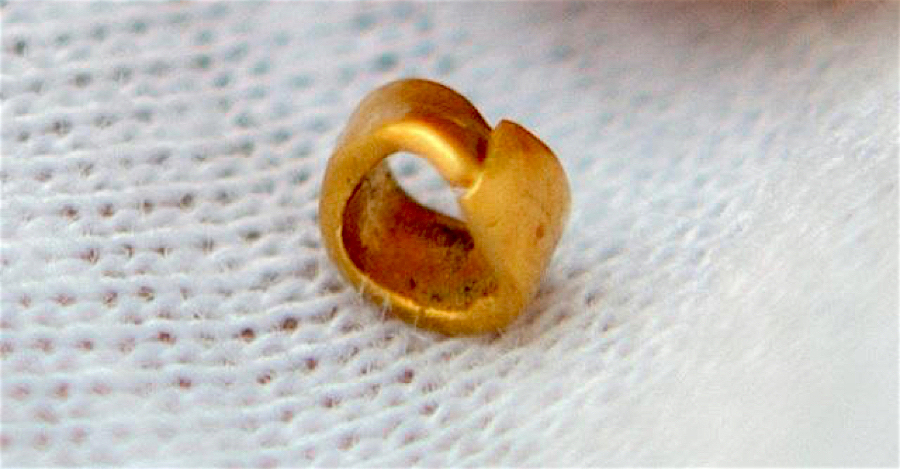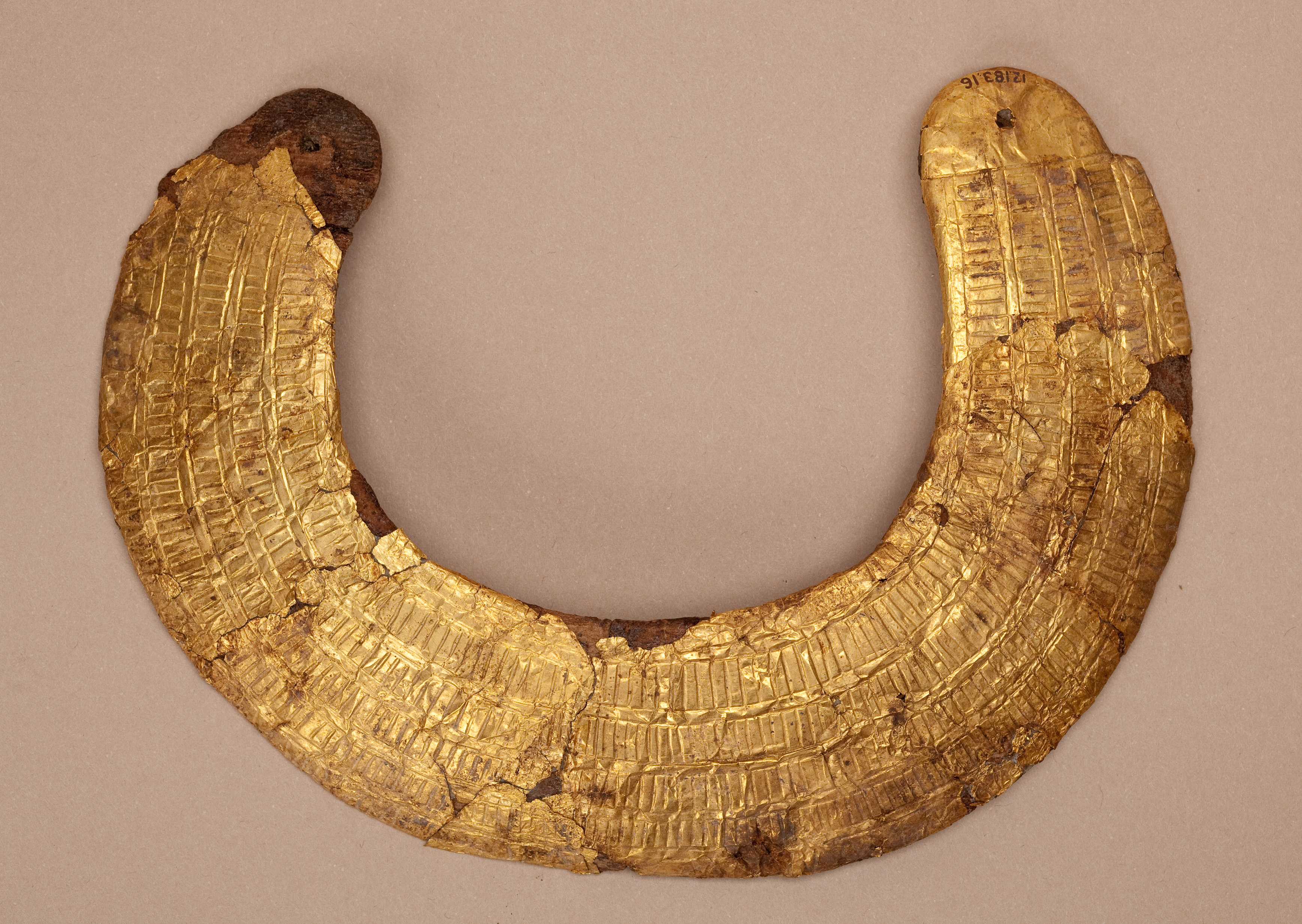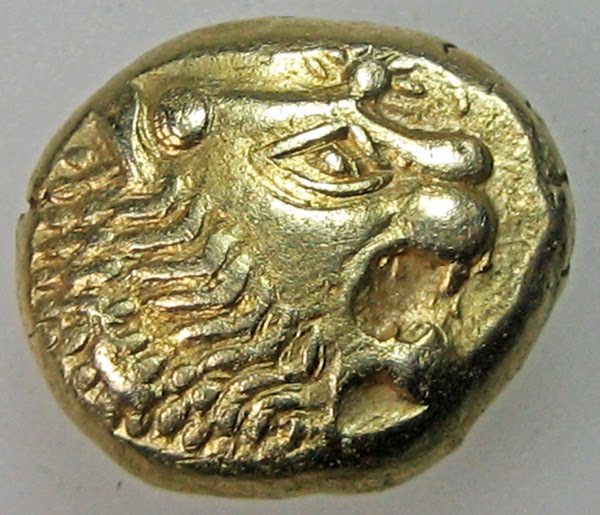History of Gold
Gold is fascinating. Why did we, as a species, decide a shiny rock held so much value? Why does it matter? Value should be subjective, so why have we all agreed on gold’s worth? Even still, somehow, there is quite possibly no better way to signal wealth than through gold. Ever since the first appearance of the mineral it was coveted as a signifier of importance – going so far back to gold artifacts being found from the year 4,600 BCE. …Why?

Believed to be the first ever example of a gold artifact – a surprisingly small golden bead from Bulgaria. Photo credit: Mining.com, This just found bead may be the world’s oldest gold artifact
It’s because gold is gold. In other words, gold’s worth is defined by the fact that it is gold. Confusing? Let me explain.
Gold holds a unique place in the hierarchy of minerals. Not nearly as useful as other minerals, and yet not nearly as common. Everything about gold leaves it in a perfect equilibrium. It is effectively useless, but just rare enough. Because of this, our perspective attributes the scarcity to the importance of the mineral. To illustrate gold’s limbo of value just a little better, it’s extraordinarily important to mention the mineral’s durability. Gold hardly ever changes form or quality when left alone. So, with that, humanity now has a large, shiny depository of a mineral that is just rare enough to warrant it’s value. It is quite literally referred to as the “Goldilocks’ Mineral.”
Without our perspective, gold holds no intrinsic value. And yet, to us, it is one of the most coveted materials on Earth. This sentiment rings true throughout history, appearing everywhere throughout history. It appears humans almost intuitively attribute value onto gold.
Throughout history gold has been used as a signifier of wealth and beauty, it didn’t matter what form. Gold, in its base form, has a value, and as such its early uses were almost exclusively ornamental.
Old Gold
In perhaps its most noteworthy debut, gold appeared in the form of artifacts in Ancient Egypt at the end of the fifth millennium. Egyptians seem to be the first culture truly beginning to appreciate the value of gold, and thus the permanence of the mineral led it to be tied with other such eternal concepts, such as the divine. Thus, royalty and deities were deeply tied with gold. It’s written that some Egyptians felt as though gold was even “the flesh of the Gods.”

The photo above is an example of an ornate funerary collar, meant to decorate a mummy. This further exemplifies the Egyptian understanding of the divinity of gold. Photo credit: The Met, public domain
The Ancient Egyptians are also the origin of the oldest known gold mine, from around 1320 – 1200 BC. In fact, gold was so noteworthy to the Egyptians that this gold mine is listed on one of our earliest examples of a map, ever. Egypt has an expansive history with gold, and as early as 2600 BC some scripts even say that it was “more plentiful than dirt.” Even still, Egypt wasn’t the only area with such large amounts of gold mines. In modern day Saudi Arabia, large mines were present all across the Red Sea.
While, of course, many other places in the world have their own history with gold, the most “famous” origin by far is from Ancient Egypt. In the 6th century BCE, the first gold coins were minted in Lydia. In time, as gold was already viewed with such inherent value, it became the standard currency in the ancient world.

The Lydian Lion – the world’s first coinage. Photo credit: Egypt Today, The first currency in history…
Quick Note on Karats
Before we get to discussing types of gold, there’s an important concept to understand: karatage. If you’re anything like me, you’ve heard this term throughout your life. I knew inherently it meant something about the value of the gold, but I had no idea what it really meant. The direct definition of karatage is the purity of gold alloyed with other metals.
Regardless, the carat (or karat, for us Americans) is a unit of mass used to denote the purity of gold. Firstly, 24 Karat gold is the purest and best type of gold. This means, simply, that it was completely pure gold. Naturally, 18 Karat is 75% gold and 25% other metals, 12 Karat is 50% gold, and so forth. Karatage is the relationship between the gold present and the other metals within the construct. The karatage of the gold is almost directly correlative to the value.
Different Types of Gold
I’m sure you’re also wondering about the many types of gold out there in the world. It’s a fascinating companion to the karat metric. See, there are three kinds of gold: Yellow gold, white gold and rose gold.
The reason I tie karatage into this is because the color changes depending on what metals are used in the alloy’s composure. While karatage measures a gold’s purity, the color of the gold is purely determined on what it is combined with to increase its strength.
Pure gold is actually much too soft to be used on its own, and the combination of other metals is what makes up every piece of modern gold we see used today.
- Yellow gold is the most naturally occurring, and is achieved when metals like zinc or copper are mixed in.
- White gold is mixed with palladium or nickel to make it seem like a silver or a platinum.
- White gold is mixed with palladium or nickel to make it seem like a silver or a platinum.

Yellow, white and rose gold, respectively. Photo credit: Reflective Jewelry, Gold Wedding Rings: 27 Points You Must Know Before You Buy
Modern Gold
To recap – gold has always been valued. From its first uses to the modern day, it remains a show of wealth and elegancy. Even today we still understand gold to be a thing of high value, adorning ourselves with gold jewelry, objects, and whatever else we can use gold in. It’s pricey, and yet, that’s exactly the appeal. Because of this, there is a massive market for secondhand gold. As gold retains its value, any offer in which you can get gold for prices below the norm makes most secondhand gold purchases a great investment opportunity. In short, it’s rare for your item to lose value.
This is well known by the world at this point. Gold is a precious metal due to its “Goldilocks” traits, and all over the globe people are mining it. Though, in fact, most of the gold that has been found in this world only come from China, Australia, and South Africa.
Gold is a wonderful metal with a rich history, and I hope you’ve learned something from this blog.
Remember, gold is gold, no matter how old or new.
Check out all the gold offered at Alex Cooper Auctioneers by going to bid.alexcooper.com.
Cormac Jensen
SCAD Class of 2025

If you like what you read, pass it on and share on social media! – Facebook & Instagram